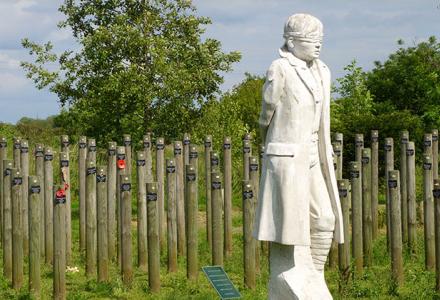In the years before war took hold of the world, Margaret and Tom fell in love. On the eve of his enlistment, Tom proposed to Margaret with a diamond ring and their engagement was announced.
Throughout the war the couple exchanged hundreds of letters. Then Tom’s correspondence slowed. In 1917, the young soldier told his fiancée that he had come to ‘love another’. Margaret was devastated. The future she’d planned had evaporated and she was furious that she’d spent some £50 stocking her glory box with cutlery, linen, and other things to make a new home. She felt, she said, like ‘a broken doll’.
We don’t know what drove Tom to break his pledge to Margaret. Perhaps it was the ‘soothing touch’ of the woman who nursed him, perhaps the time and distance away from home, perhaps the need to find comfort midst the horror of war. Whatever the reason, Tom married Belinda, his young English nurse, in March 1917.
This is a story of women’s agency rather than victimhood. Margaret was affronted by the dishonesty of her fiancé and she thought he ought to pay. She took Tom to the Supreme Court, suing her former beloved for £750 in damages for breach of promise. The judge found in Margaret’s favour and ordered the young soldier to pay his former fiancée £150. Tom had just £8 to his name, no property, no savings in the bank, just a paltry pension, and an unsteady wage. With nowhere near the sum found against him, Tom was declared insolvent.
Margaret was heartbroken at losing Tom, but part of this young woman’s distress was likely her worry that she might never find a husband. After the war, two million ‘surplus’ women resided in Britain alone. Some have agued that an already unequal sex balance had been worsened by a ‘lost generation’ of men. The war had a demographic impact on Australia as well, albeit on a smaller scale.
Margaret Broadhurst married Harold Bower in 1923. Tom Archer died in 1940 at the Caulfield Repatriation. He was forty-seven years old, hardly an old man, leaving behind his beloved Belinda and their four children.



